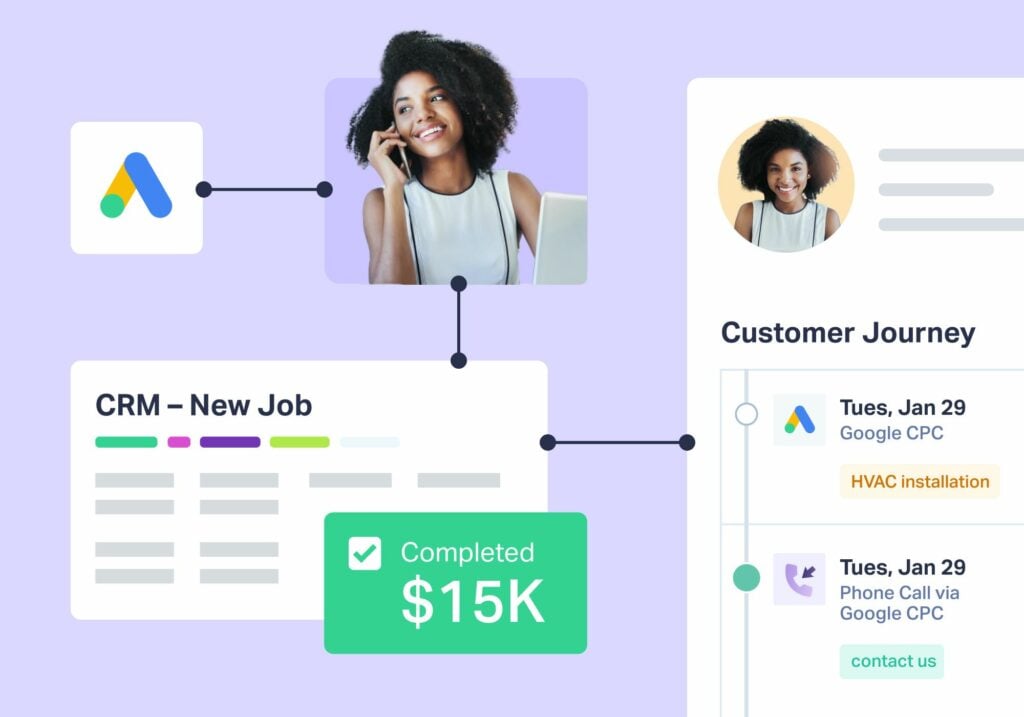
Here are the three major problems that steal credit away from the marketing agencies that earned it:
- Customer Lifetime Value
- Long Sales Cycles
- Limited Attribution Models
We're going three real customers. And along the way, we'll show you how to fix these problems and prove the value of your marketing.
Customer Lifetime Value: Kevin's Story
One of the biggest marketing attribution problems is customer lifetime value—getting credit for the initial purchase, but not for purchases after that.
This is an especially big problem for agencies working with home service providers.
Take for example Kevin H.
Kevin became a prospect for a home service company after clicking a Google Ad. A few calls and quotes later, he then converted into a customer with a water line repair job.
This initial job was worth $800. And since Kevin came in through an ad campaign, the marketing agency handling this account was credited for that revenue.
However, that's not the end of Kevin's story.
He then went on to install a new HVAC system with the client just a day later—a $13k job. Two months after that, another $3k job.
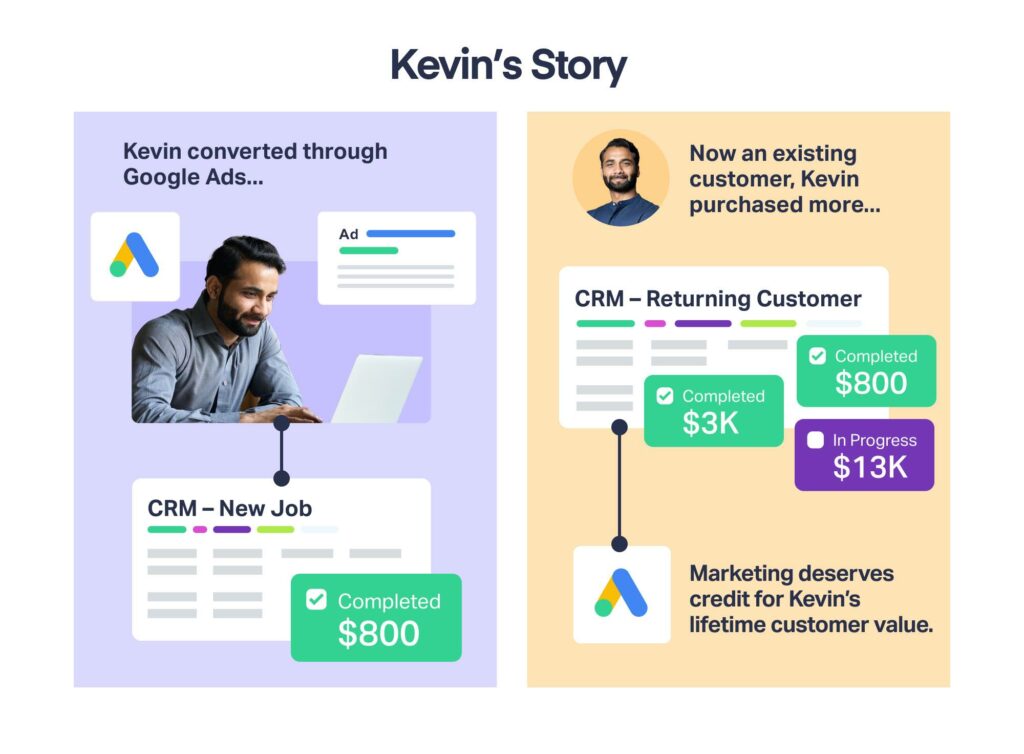
The problem here is that since Kevin became an existing customer after the first job, the client's CRM attributed the revenue earned from these follow-up purchases to internal teams (sales reps, customer service, etc.), not the marketing that brought them there in the first place.
So rather than getting credit for nearly $17K in revenue, the marketing agency was attributed with just $800.
Ouch.
How to Solve It
So, what can agencies do to fix this problem?
The solution here is twofold:
- Understand the complete customer journey
- Be able to view the full lifetime value of each customer
Certain tools (like WhatConverts) let you do both.
For example, with WhatConverts we can:
- Zoom into the details of individual leads like Kevin H.
- Scroll through his entire customer journey including calls he made, appointments he booked, transactions he completed—all on a unified timeline.
- See the revenue brought in with each sale.
- Rewind all the way back to the very first interaction Kevin had with the company to see what marketing deserves the credit.
Here's how.
What's more, we can actually sort the Lead Manager to show the full lifetime value of Kevin H.
And it only takes a few clicks.
Just:
- Filter leads by name (e.g., "Kevin H").
- Scroll up to the Main Data Display to see the total value he brought in.
You can even build reports that show a breakdown of full customer value.
With this kind of data and organization capabilities, marketing agencies can quickly and clearly show their clients the true impact of their marketing efforts across the full lifetime of a customer.
Marketing attribution problem #1—solved.
Long Sales Cycle: Barbara's Story
The next attribution problem rears its head in businesses with an especially long sales cycle.
Roof repairs, kitchen remodeling, HVAC installation—these are all big jobs, often with big price tags. Most homeowners will set up a quote for these types of services, save up the funds, and make a purchase decision months, even years later.
However, many CRMs will treat these quotes as an initial appointment. As a result, the prospect is listed (again) as an existing customer. So revenue earned after that quote is (again) not attributed to the marketing that generated it.
Take the story of Barbara C.
She clicked an ad and contacted an electrical service provider in March of 2022 for a quote on replacing a panel box and running a new line—a pretty big job.
She then waited a full year and a half before booking an appointment, presumably to save up.
All said and done, the job brought in over $15,000.
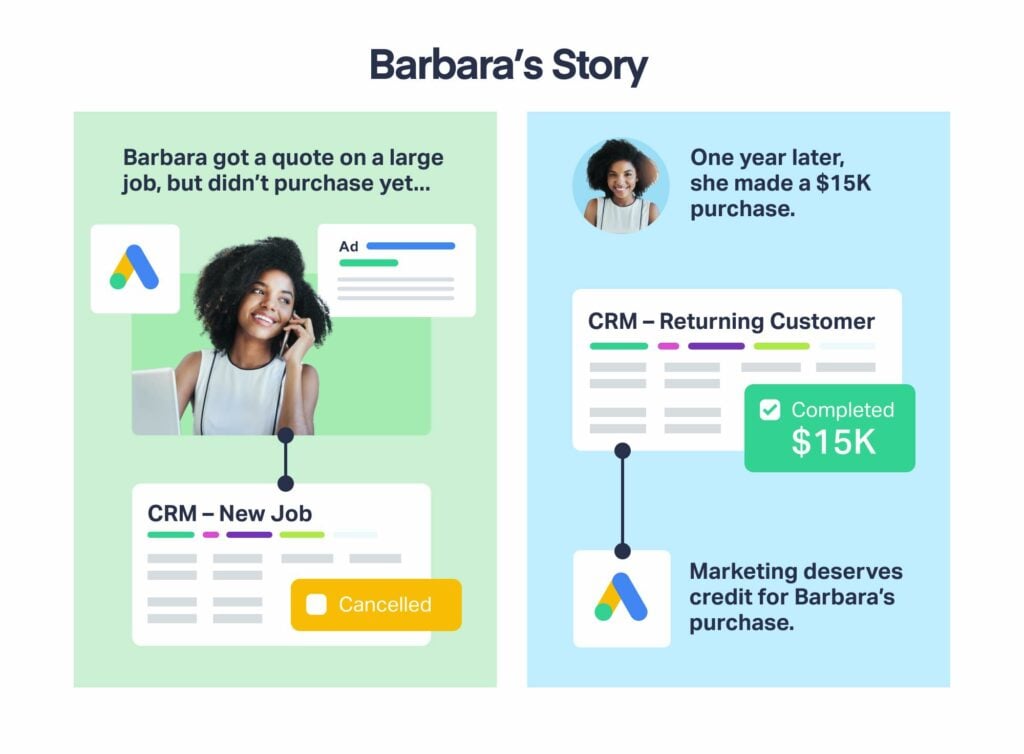
However, the revenue was categorized as "return customer" since she was already in the system for the quote.
Can you guess how much of that revenue was attributed to marketing?
Zero.
Even though the online ad was the initial point of contact, the credit for this mammoth sale went to internal teams, not the agency.
How to Solve It
The solution here is having access to the complete customer journey.
If you're judging your marketing effectiveness through CRMs alone, you aren't getting the full picture.
This is where tools like WhatConverts come in.
With it, you can drill down into individual lead details and trace the customer journey back to the very beginning—what marketing brought them in.
That way, you can see which leads took especially long to close and how much revenue they brought in, thanks to your marketing.
Here's what that process looks like for Barbara C.
Check out the case study below to see how else agencies can use these tools to earn and prove marketing ROI for their clients.
Case Study: CAMP Digital Delivers 1570% Marketing ROI with WhatConverts
Limited Attribution Models: Constellation Marketing's Story
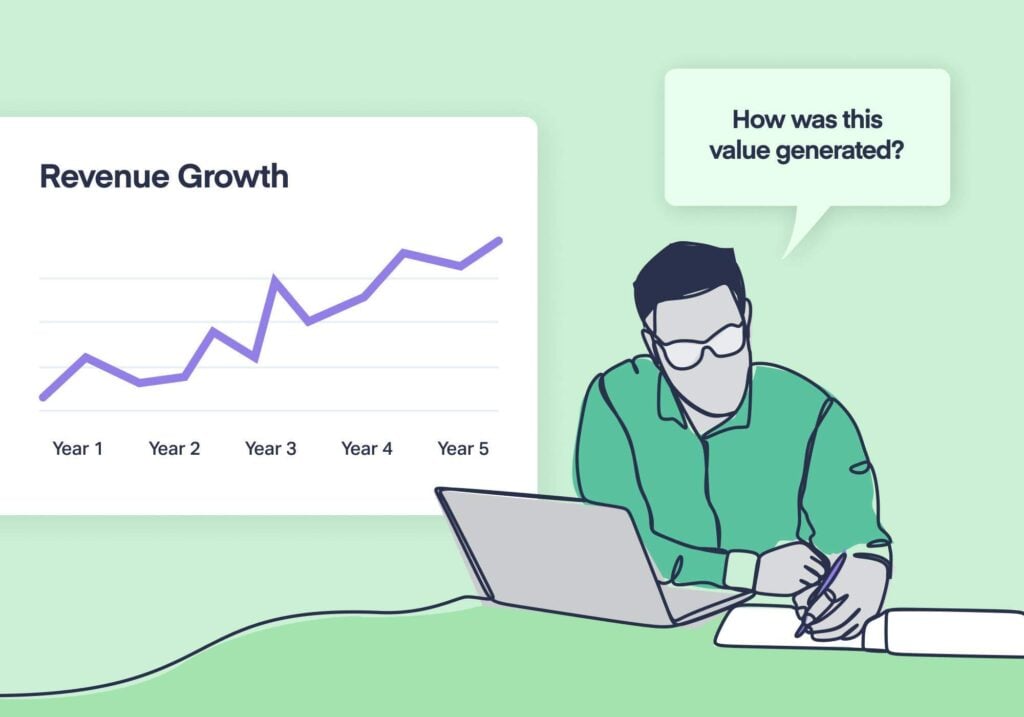
Last but not least is the problem of limited attribution models.
Let's take Constellation Marketing's story as an example.
Their work with a law firm client resulted in 5 years of increased traffic and lead generation.
However, when the client hired a consulting group to streamline spending, CRM data showed the majority of new cases came not from Constellation Marketing, but from a chatbot.
The problem here has to do with the CRM's limited attribution model. Within the CRM, it looked like the first touchpoint was with the chatbot because it only tracked the sales cycle (Lead → Customer).
But what it didn't show was these leads that converted through the chatbot came from Constellation's marketing. The CRM just didn't track the data to show that. And consequently, the agency wasn't getting the credit.
How to Solve It
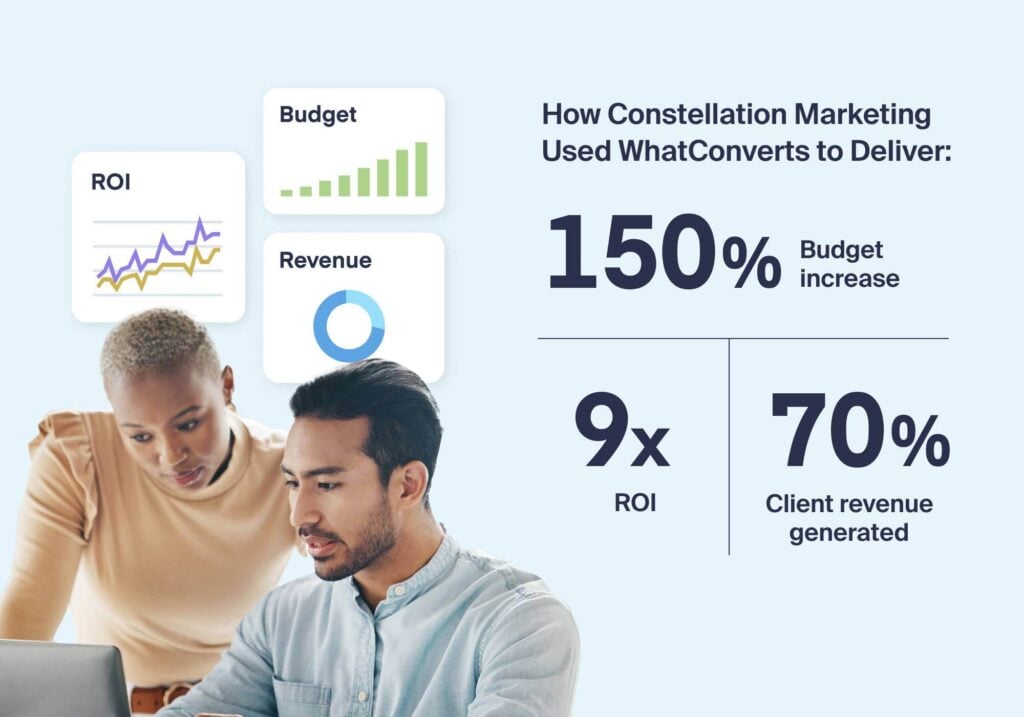
While CRMs may only show the sales cycle data, lead tracking platforms track the marketing cycle data (Visitor→Lead).
When Constellation Marketing used WhatConverts data to cross-reference their client's CRM data, they could then prove that the leads they generated were turning into customers.
In fact, they discovered that 70% of their client's revenue came directly from their marketing—data they used to show a 9x ROI and build the business case to increase their client's budget by 150%.
For a more detailed breakdown of this solution, have a look at the case study below.
Case Study: Law Firm Marketing Agency Turns Client's Doubt into a 9X ROI Win
Wrapping Up
It's absolutely essential for marketing agencies to get the credit they deserve for their work.
And while the three attribution problems above often make that difficult, lead tracking platforms give you the data and tools you need to truly prove your value (just like our customers did).
Want clearer marketing attribution so your marketing gets the credit it deserves? Start your free 14-day trial of WhatConverts today!
Get a FREE presentation of WhatConverts
One of our marketing experts will give you a full presentation of how WhatConverts can help you grow your business.
Schedule a Demo
Grow your business with WhatConverts





